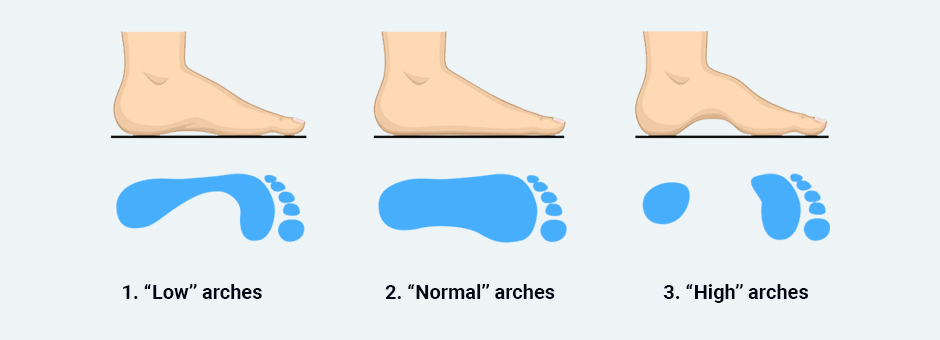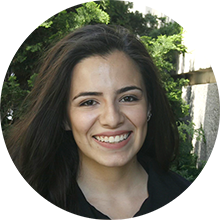
Runners are always looking for ways to get a competitive edge while minimizing pain and injury. Because shoes are the primary equipment for running, it stands to reason that shoe selection is fundamental to running performance. But with so many options for running shoes, finding the perfect shoe for your foot and running style can be a challenge.
As a courtesy, many well-meaning running stores offer gait analysis to customers. But the methods used by running stores to analyze your gait and the expertise level of running store employees often fall short of accurately assessing your gait and foot mechanics.
In most cases, in-store gait analysis approaches are unscientific and antiquated, relying on arch type, foot pronation and foot strike while ignoring more significant motor deficits in other areas of the body that undermine running performance and increase injury risk.
One of the first things a running store analysis looks at is the shape and height of your foot arch. This is done by observation, and also by having you stand on a heat-sensitive pad that reveals where your standing foot comes in contact with the ground. Based on that information, your foot is then categorized and shoe types recommended:

While this approach may seem logical at first glance, it is highly flawed. The anatomy of the human foot arch takes on multiple variations, and having “flat feet” or “high arches” does not mean your foot is abnormal.
Moreover, the foot arch behaves differently when in motion, and taking a static measurement is relatively useless for assessing your needs in a running shoe. At the end of the day, there is much more to a runner’s foot that the shape of its arch, and the arch alone does not determine your requirements for a running shoe.

As an alternative to or in conjunction with a foot arch assessment, some running stores may videotape your feet as you run on a treadmill. The store “expert” will then review the video to see if your foot arches remain high (oversupinate) or drop low (overpronate) as you run, and make a shoe recommendation based on their observation.
But in truth, observing your foot arch behavior while running does little to inform you about your running performance or injury risk, much less the best shoe for your needs. Many champion distance runners have flat arches, so to say that flat arches are “abnormal” is a misnomer. If a flat arch is able to return to neutral (resupinate) under load, it is mechanically functional and perfectly normal.
If in fact your foot does overpronate while running, the store’s video analysis will not indicate the underlying cause, or how to treat it. It may be caused by a faulty heel strike, or by external rotation of your hips. Only a complete running analysis using instrumented equipment can help you correct and optimize your running form.
Running involves more than just your feet, and the needs of each individual runner are unique. Many deficits in running gait originate elsewhere in your body and can only be corrected with accurate diagnosis.
During the running gait cycle, every joint in your body is engaged and every body part involved. The way your muscles, bones and joints interact while running have a profound impact on the overall effectiveness and safety of your running gait. Your posture and the way you move your legs, arms, and hips affect the condition and position of your feet.
A thorough running gait analysis conducted by an expert in running mechanics is the only way to draw accurate conclusions about your running gait and make effective shoe recommendations. The gait analysis methods used by most running stores are simply deficient.
A true running gait analysis provides actionable quantitative data about the mechanical efficiency of your entire body during the running gait cycle. It helps you identify bad habits and compensation patterns that undermine your performance, pinpoints postural issues that can set you up for injury, and provides a data-driven baseline to measure your progress against.
A professional running gait analysis includes:
The incidence of running injuries is high, relative to other sports, and most injuries are caused by deficient gait mechanics. A 3D running gait analysis provides quantitative data that can be used to retrain the way you run.
The running gait analysis lab at NYDNRehab is equipped with the most technologically advanced research-grade equipment, including:
If you want to realize your peak running performance potential and reduce your risk of injuries, schedule a 3D running analysis today at NYDNRehab. Our sports medicine team will identify mechanical deficits and help you perfect your running gait, and we’ll even help you find the perfect running shoe!

Dr.Kalika revolutionized foot and ankle care by using high resolution diagnostic ultrasonography for structural diagnosis, combined with with gait and motion analysis technology. Dr.Kalika’s motion and gait analysis lab is the only private lab in the US that features research-grade technology found only at top research universities, made available to patients in his private clinic.
 Dr. Yuri Brosgol
MD
Dr. Yuri Brosgol
MD
 Dr. Michael Goynatsky
DPT
Dr. Michael Goynatsky
DPT
 Dr. Daniela Escudero
DPT
Dr. Daniela Escudero
DPT
 Dr. Michelle Agyakwah
DC
Dr. Michelle Agyakwah
DC
 Dr. Tatyana Kapustina
L. Ac.
Dr. Tatyana Kapustina
L. Ac.
Dr. Lev Kalika is a world-recognized expert in musculoskeletal medicine. with 20+ years of clinical experience in diagnostic musculoskeletal ultrasonography, rehabilitative sports medicine and conservative orthopedics. In addition to operating his clinical practice in Manhattan, he regularly publishes peer-reviewed research on ultrasound-guided therapies and procedures. He serves as a peer reviewer for Springer Nature.
Dr. Kalika is an esteemed member of multiple professional organizations, including: